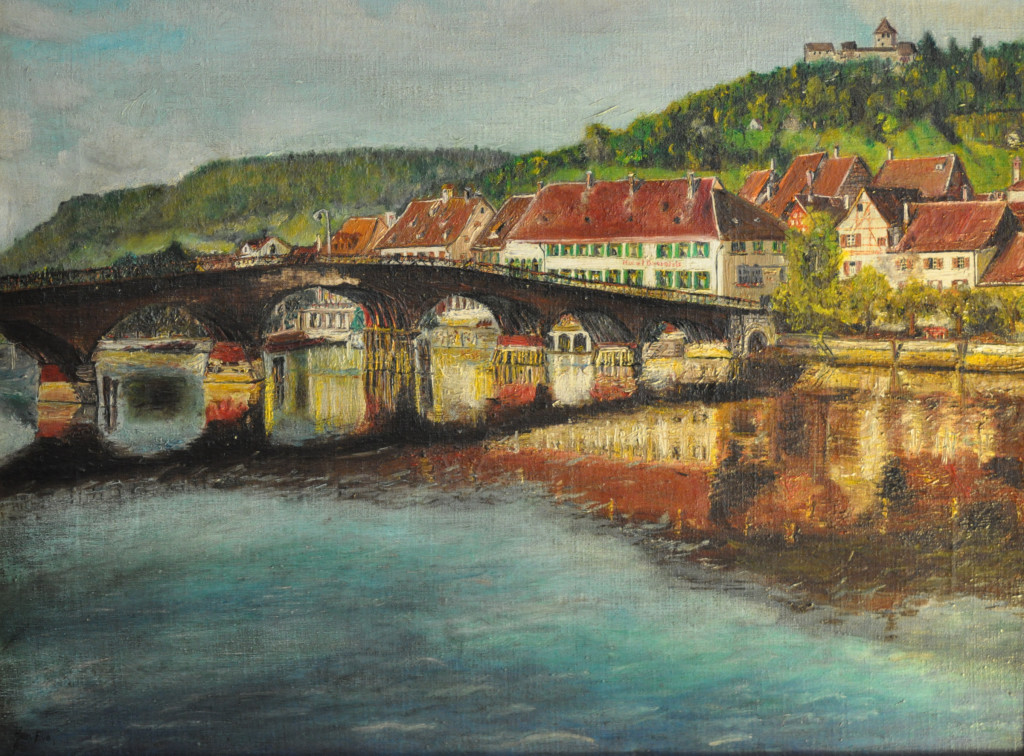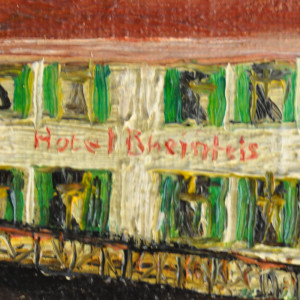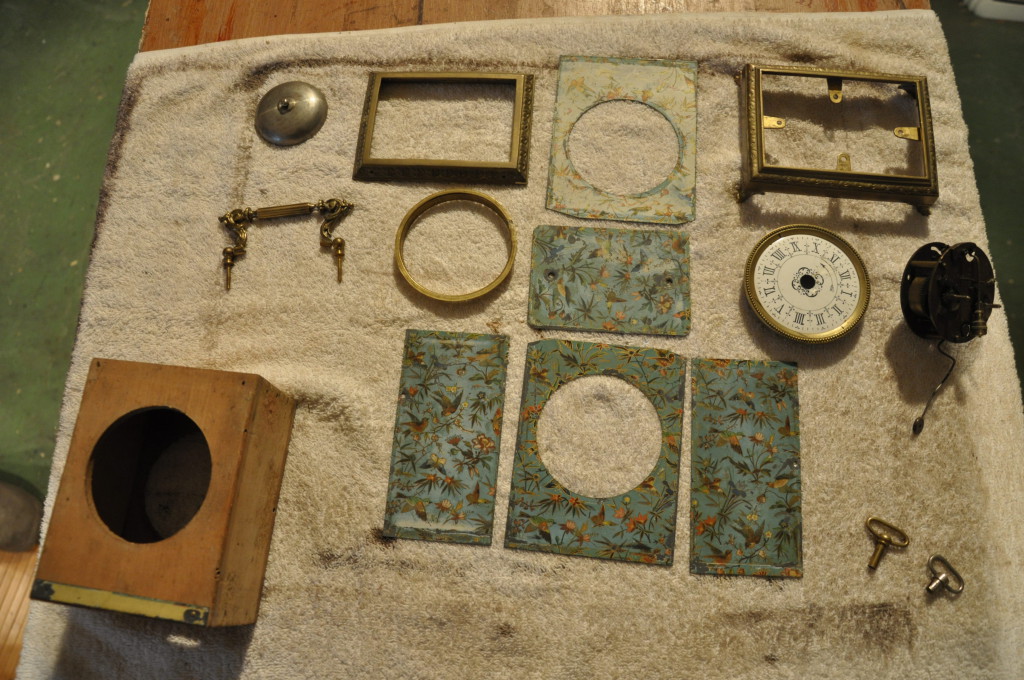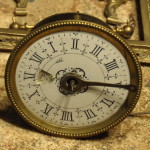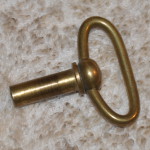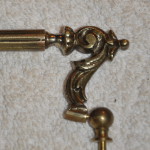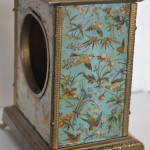In March 2015 I bought this tableau from a private seller, a very nice person.
It is signed and was thus attributed to ‘Jean Eve’ by the seller. It was told to the seller, when he acquired it, that it shows a town in the Val D’Oise département in France named La Roche Guyon.
I have seen (before and since this acquisition) quite some pictures painted by Jean Eve. This one seemed quite different. To my amateur eyes this is basically due to the use of much more colors in comparison to other pictures. Whereas the straight lines and the blurry trees/valleys are quite resembling.
The day after having received the tableau, I had the idea to see how this place looks today. No problem, I thought, with today’s technology: Google Maps and Google StreetView will bring you anywhere instantly.
The mentioned town is located on the Seine-river. When looking it up on a map however, I saw there is no bridge. Over time bridges can disappear, especially in places in France under German occupation during World War II and this picture could well be before that date. However, StreetView was even more conclusive: there is no slope in this town or at least not such a steep one. And no castle or fortress in the upper part.
My conclusion: this cannot be the right place. Maybe it is another nearby town or village. I started to look where there are bridges not far away. I found one and looking at the bridge with StreetView I realized the Seine river is much larger than the one on the tableau. Conclusion: this is not at all the right place.
Switzerland?
To find out more I had to change my strategy and continue with the help of things visible on the tableau. I started with concentrating on the name of the hotel which is written with red ink on the biggest building close to the bridge. I was able to read the word “Hotel” quite easily, but the rest was much harder to decipher.
I started to read letter by letter: Hotel ‘B n e i t e t s’ was my first attempt, followed ‘B y b u e r o l e t s’ . Using Google’s spell-correction I hoped to find miraculously the right name. It didn’t. And the more I changed the letters, the less the word made sense. The ‘n’ could have been a ‘u’. The two ‘t’s could be ‘l’s and ‘f’s. What is a ‘tefs’?
Then I had the idea to magnify the inscription with my camera taking a macro-picture. This was the key.
I now read B r e i n f e l s. Breinfels. In the meantime, due to Google’s geo-localisation-based suggestions I switched to duckduckgo.com and it corrected “hotel breinfels” to “Hotel Rheinfels”. Just looking at the first pictures it became clear: this is it. Hotel Rheinfels in Stein am Rhein in Switzerland. And not in France. First image was this page.
To be sure, I clicked on other links, among it a blog which was talking about Stein am Rhein and Hotel Rheinfels with lots of pictures one of it the fortress (Hohenklingen) up the hill. The silhouette of it was exactly the one in the tableau. Now I was sure about the place.
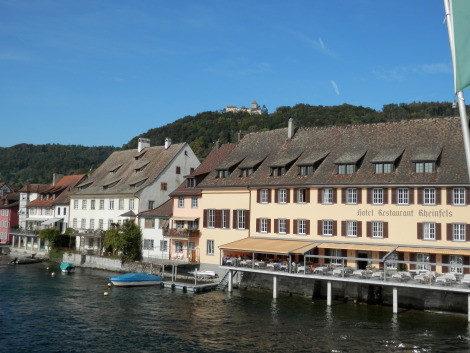
Image copyright: TravelsForFun – the Snyder family – see their blog: https://travelsforfun.wordpress.com/
Is the tableau authentic?
While at first I just wanted to see how the depicted place looks nowadays, having found out that the original description of the tableau is not correct, I need to make sure that the rest is authentic. Basically, this means to answer the following questions:
- When was it painted?
- Can the tableau authentically associated with Jean Eve?
These two questions are actually related. When I have some time, I will dig into it.
